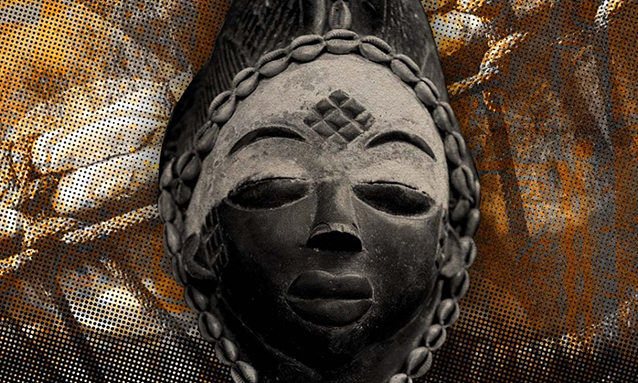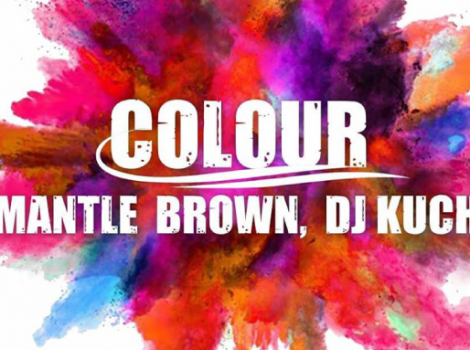
The culture, landscape and history of a country are all entwined with the music it makes. It’s like holding a conch to your ear—the sound it produces is the product of its formation. If you were to hold Botswana against your sizable lug, you’d hear a fabulous racket like no other fashioned anywhere in the world. Donald Trump might have despicably referred to it as a “shithole country” but despite his misguided slander, there is a rich history to the sprawling land that creates an enigmatically individual sound.
It is, in fact, an individualism that has been scientifically proven. Computer-based analysis of musical compositions and their contours found that Botswana may well have the most unique and diverse folk music in the world. A striking 61% of all recordings analysed by Queen Mary’s School of Electronic Engineering and Computer Science from the sub-Saharan nation were found to be global “outliers”.
The study analysed field recordings drawn from the Smithsonian Folkways Recordings and the British Library. Through computer analysis, researchers used signal-processing tools to quantify musical data and establish compositions that fell outside of the norm.
Remarkably, most of the recordings from Botswana happened to be wildly different. While other vast regions like Pakistan and Indonesia also had a distinct outlier ratio, the question remained, why was Botswana so unique?
While this is still subject to further study, a clue comes from the origin of the country’s name itself. Botswana simply denotes the ethnic group of inhabitants with the highest population. However, a diverse range of different tribes resides within the borders. The traditional lifestyle of the area is a herding existence whereby farmers live under tribal rule. This meant that distinct ethnic groups were constantly moving—never settling into a cultural norm, while also frequently encountering each other and trading ideas.
This itinerant lifestyle without a fixed home may well be why, unlike the majority of sub-Saharan African music, drums do not feature. Instead, heavy percussive instruments are traded for simple hand-clapping rhythms while string instruments lay down the melody. These string instruments are, in themselves, diverse.
Once more, the roaming nature of the people may have prevented a standard from being settled upon. All the while, various ideas were passed along from group to group in effect deepening the rabbit hole of individualism.
What’s more, the sound of Botswana is also one that harks back into the past more than many others. The Tsodilo Hills in the northwest of the region have been continuously inhabited since 17,000 BC. In fact, in 2019, research proposed that Botswana may well have been the region where modern humans first evolved around 200,000-300,000 years ago (which is a gaping spread researchers would do well to refine). Naturally, this gives the country quite literally the richest peopled history in the world; given that folk music is the music of the people, it follows suit that it is different.
However, it isn’t just ancient history that has coloured the country’s sound. In the 19th century, hostility broke out. Conflicts between inhabitants and Ndebele tribes migrating into the region from the Kalahari Desert created regional instability. This was heightened further by Boer settlers. During this time, music became all the more important. After all, its very existence relates to forming bonds that in turn strengthen the collective of the tribe. It is, quite literally, a unifying force, it makes us emotional which allows empathy to bind us.
Thus, during this time, dissonant voices came together to form a strange mix. This was exacerbated further still when the British placed the region under protection to try to restore order. With its boundary now unimpeached, this odd mix blossomed as though trapped on a petri dish. However, it was simultaneously discouraged as racist theory posited that it hindered development. During this period, music culture became oddly stilted and often reduced from a collective practice to an individual one which heightened the complexity.
However, when independence was declared, music was seen as a focal point of the revival and celebrated as a defining feature of the region’s identity. Therefore, it exploded, and the increased complexity was paired with the communal exultancy of party music once more. All of this coalesced to form the music we now hear. While it is difficult to apply this theory directly to music given the impossibility of historic recordings, it is likely that it followed the same trend that can be seen in other elements of its culture and extrapolated.
This unique history is matched by the unique instruments that the locals decided to use to preserve their folktales in song. The dominant instrument across the various cultures is the segaba.
The segaba is similar to a violin but uses one string hooked to a tin on a bow-like contortion. Alongside this, a sentinkane is often played which is essentially a kalimba played like a keyboard.
These are unique in themselves, but it is how they are deployed that really helps to drive the songs. You see, while music is a massive part of the country’s culture, it is closely tied to major ceremonies and often sequestered elsewhere. Aside from being played at beer gatherings, weddings and initiation ceremonies, it is also played at the four seasonal festivals.
To bless the Letlhafula (Autumn), musicians create songs that signify the renewal of life with a style that translates as ‘work-party songs’. In the Mariga (Winter), ‘shade’ songs are played which are more akin to fireside stories. In the Dikgakologo (Spring), vibrant ‘melt away’ songs are more heavily vocal-based, rather beautifully inspired by children running through the newly blossoming fields. And in the Selemo (Summer), beer-brewing comes to the fore and all the frivolity that comes with that.
In essence, this creates four different genres of highly unique folk, whereas most countries have one genre of highly derivate folk. So, it’s no surprise it’s such an outlier. But if you think that implies dissonance, then think again. The sound is a sweet mix of melodies with the integration forming the defining difference.
Article by Tom Taylor
Source: https://faroutmagazine.co.uk/botswana-most-unique-music-in-the-world/




I love my Botswana!!!